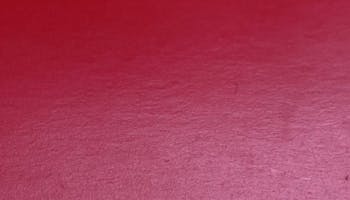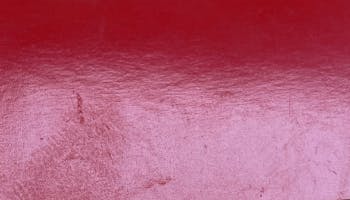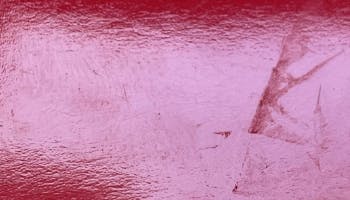Home DIY
When To Use a Primer or Undercoat
Using primers and/or undercoats are necessary during the painting process. Priming helps correct the porosity of a surface, ensuring maximum adhesion, so that you get a perfect paint job. In this blog we will guide you through the differences between a primer and an undercoat, and explain why priming is vital for best results.
Picking the right primer is important, but with a range of primers, undercoats and sealers available it can be confusing. Decorators often use the terms interchangeably but in simple terms, an undercoat is always a primer, but a primer is not always an undercoat. Although similar, both serve quite different functions.
Primers act as a foundation for your paint to stick to while undercoats create a flat and level base for topcoats.
One easy way to remember is if a surface is painted use an undercoat, if it's new, use a primer.
Reference: When To Use a Primer or Undercoat
Undercoat
An undercoat is used to create a neutral base for colour to develop. This is because they work to cover surface imperfections, therefore they are often sanded before recoating. Undercoats (sometimes referred to as mid-coats) exist to be used on coated ie. primed or painted surfaces, particularly wood.
Undercoats are pigmented and best used with enamel topcoats to form an ample look. When applied over a sealer or primer, undercoats work to reinforce and strengthen its function. This foundation creates a tough, resistant barrier to moisture and forms a perfect base for further product.
Primer
If you are questioning the condition of your wall for painting i.e. if it’s chalky, powdery, stained or highly alkaline, priming is advised. Priming works to hide stains and prevent discolouration. It should always be used on bare wood, this is because the surface is not only porous with grain variations it also absorbs moisture at varying rates, making achieving an even finish difficult.
Primers help in providing a uniform surface for the paint to adhere to. In the case of choosing between an undercoat or primer, primers should always be used when changing from dark to light colours or when transitioning from a glossy base coat. Primers typically bond best to matt or low-gloss surfaces, and each primer is formulated to the specific requirements of that surface.
There are different categories of primers depending on your needs, e.g drywall primer, wood primer, masonry primer and multi-purpose primers. Bonding primers in particular are perfect for more difficult, awkward surfaces while sealers are capable of managing stains in a single coat.
Whatever your painting project the use of primers and undercoats only serve to enhance the completed look. Not only will your paint last longer, but you also won’t have to worry about chipping, peeling or discolouration. Opting for a primer is a fail-safe way to achieve the perfect finish.
Example: https://www.johnstonestrade.com/product/universal-primer
Colour
Eggshell - https://www.johnstonestrade.com/product/eggshell
Sheen level
What is a sheen level?
Reference: https://www.dulux.com.au/how-to/how-to-use-colour/how-to-choose-a-sheen-level
Sheen refers to how shiny a paint is and how much light is reflected from its surface. Choosing the right level of sheen depends on what you are painting as well as your preferred finish.
While product quality is important, one of the most essential things to consider when selecting a sheen level is the amount of foot traffic in your home, including wear and tear on the surface.
Difference

FULL MATT (0-4%)
Full matt (or flat matt) paints are completely non-reflective, with very low gloss levels ranging from 0% to 4%. Flat matt paints absorb any light directed at them, giving them excellent hiding power. As a result, these paints are ideal for damaged or used walls with lots of bumps and scratches. They're also a popular choice for ceilings where an anti-reflective approach improves the room's optics. Anti Reflex 2 is our customer favourite in this category.

MATT (5-10%)
Matt paints continue to be the most popular choice for interior walls in 2022. They have a very low gloss level ranging from 5% to 10%, resulting in a non-reflective finish with no gloss or shine but slightly more depth than a flat matt. One of the primary advantages of matt paints is their ability to conceal flaws while leaving a soft, velvet-like finish that allows for a strong depth of colour. If you're looking for hard-wearing coverage - matt is the finish for you! (Available for both walls and woodwork).

SEMI-MATT (11-35%)
Semi-Matt paints are the next step along the scale. They have a slightly higher gloss grade than Matt paints (11-35%), resulting in a smooth finish with a subtle sheen. This results in a low lustre finish that not only optimises a paint's colour but also increases its durability and suitability for use in any room of the house and on a variety of surface conditions. Top tip: Semi Matt paints are also termed Eggshell paints.

SEMI-GLOSS (35-60%)
Semi-Gloss paints have gloss levels of between 35-60%, and leave a highly durable finish that can be repeatedly scrubbed. A great choice for surfaces where moisture and grease stains are likely (such as the bathroom or kitchen) or where the surface will be cleaned frequently (children's rooms and hallways are good examples). This gloss grade is also popular for interior trim details (such as staircase railings or skirting boards), as the lustre draws attention to those details and distinguishes them from the walls.

GLOSS (61-80%)
Gloss paints are for those seeking a high-shine finish. These paints are tough, long-lasting, and easy to clean, making them ideal for woodwork, doors, and trim details. Tikkurila has pioneered the development of water-based, low VOC solutions in this gloss grade category (which was previously very solvent-based), while ensuring the same hard-wearing, non-yellowing properties.

FULL-GLOSS (80%+)
The real show-stopper of the group, high gloss paints really make a statement. These extremely hard-wearing paints, with a mirror-like appearance (and a gloss grade of more than 80%), are a popular choice for areas exposed to dirt and oil, typically doors and cabinets. The most popular product from this collection is Miranol.